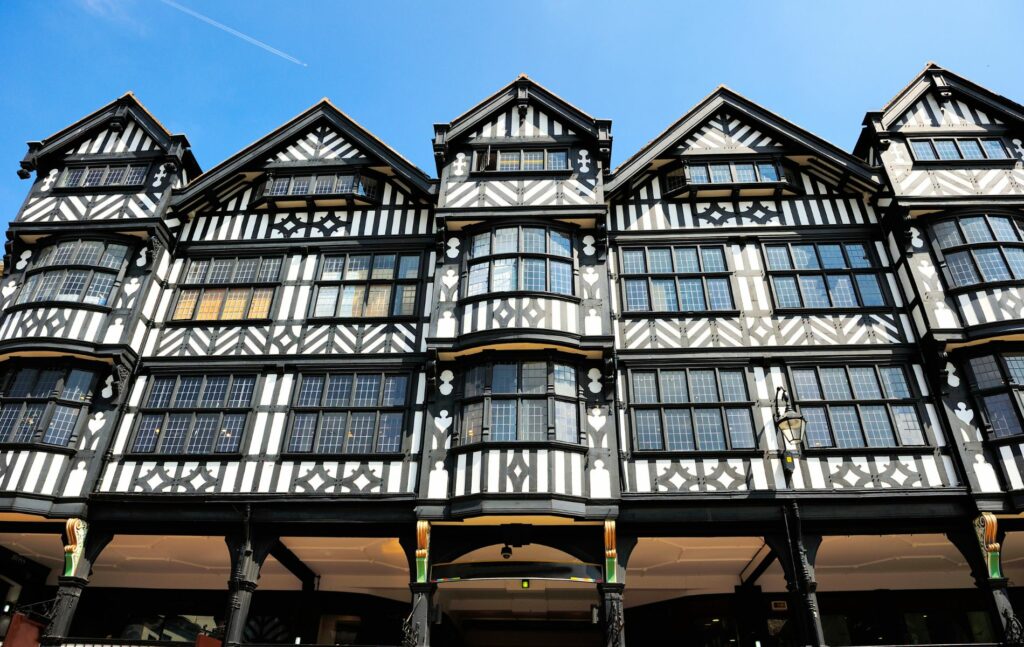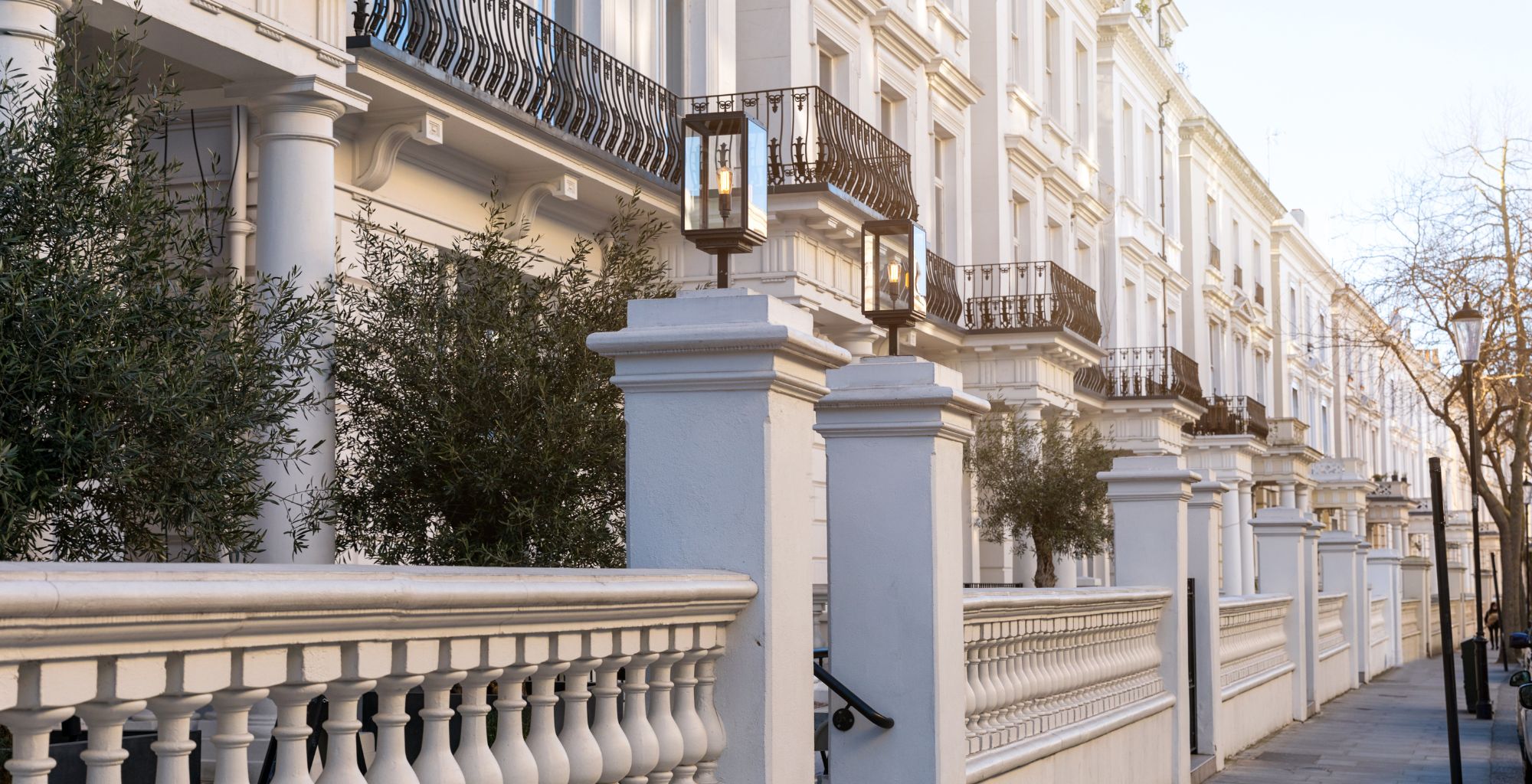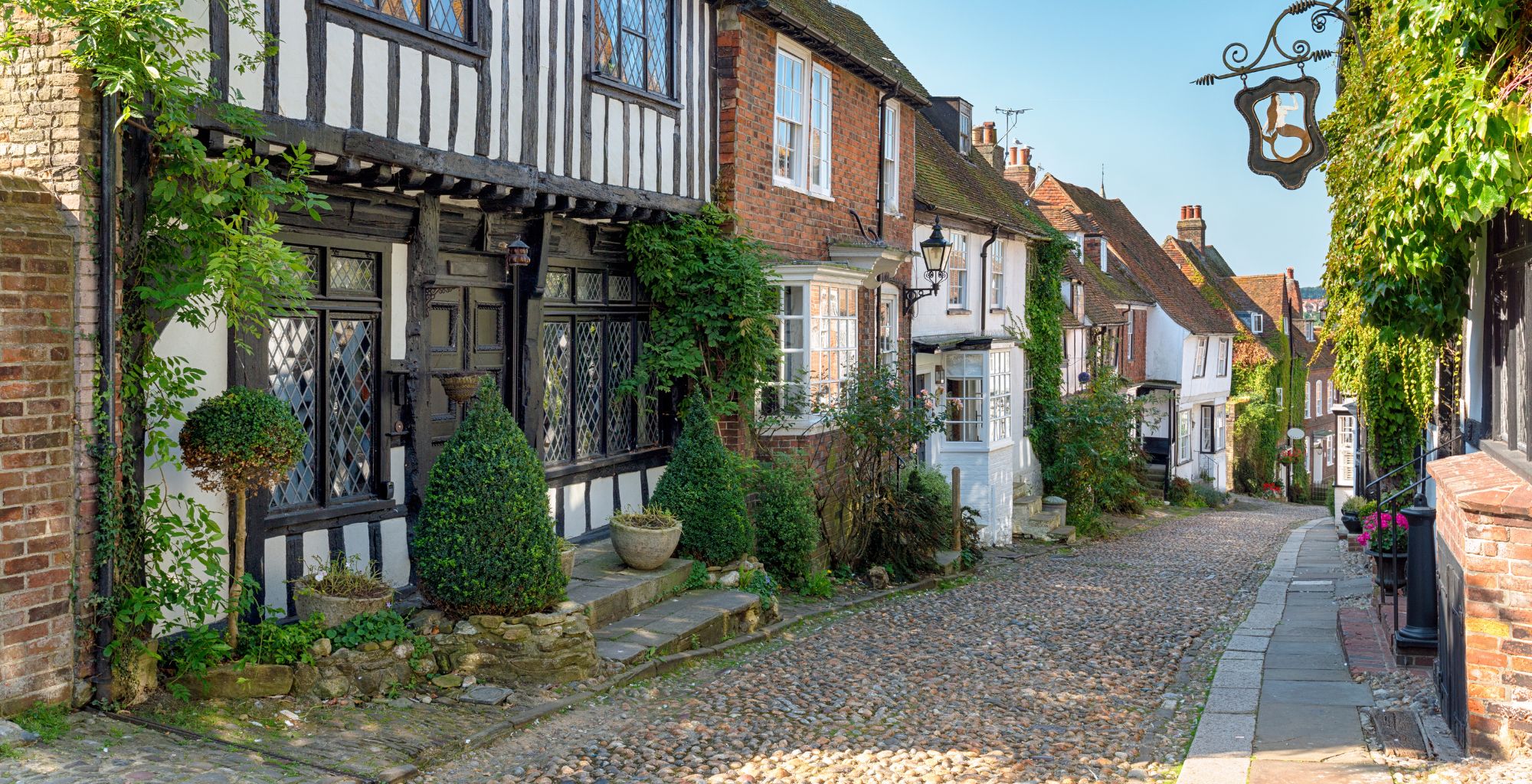As one of the most popular home counties, with so many locations that offer more than simply an easy...

House styles guide – Period Properties
British architecture has seen many differing house styles and movements over the years, some having more staying power than others, many of which still appeal greatly today.
Have you ever wondered how to easily establish which era a property was built in? There are certain giveaways and typical features we expect to see in a property built within a particular time period.
Types of house styles
In this house styles guide, we consider some of the most prominent and iconic architectural styles.
Tudor Style Property
The Tudor era, at the end of the Medieval period from 1485 to 1603, introduced an iconic architectural style that many view as one of the cosiest types of historic property.
Tudor houses are recognised for their distinctive black-and-white half-timbering.
The walls were typically wattle and daub, with many homes having overhanging jetties above the street.
These quintessential “Olde England” dwellings reflect a period when homes became more outward-facing, marking a shift from the defensively oriented courtyard designs of the Middle Ages.

Tudor properties often feature exposed beams, steeply pitched thatched roofs, and low doorways complemented by small-paned casement windows held together with lead strips. Other typical elements include gable roofs, half timbering, and multiple chimneys, which remain distinctive characteristics of this period.
The Tudor style saw a resurgence in the 19th century, meaning many properties across the UK are, in fact, mock Tudor.
Original Tudor homes were typically smaller and only a few storeys tall, as their timber-framed construction could not support larger structures. These homes were often clustered together, particularly in villages, meaning standalone Tudor-style properties are more likely to be 19th-century recreations.
Georgian Architecture
The Georgian era (1714–1837), spanning the reigns of George I to George IV, introduced a dramatic shift in architectural style, emphasising symmetry, proportion, and light.
Georgian homes are celebrated for their refined elegance.
They offered a stark contrast to the darker, more compact properties of earlier periods. Famous architects from this time in history include John Nash, who designed the original Buckingham Palace and large areas of London.
Distinguished by their Palladian-inspired symmetry, they have balanced windows and centralised doorways creating harmonious façades. Interiors reflect the same commitment to proportion. They were often designed according to mathematical principles like the golden ratio, resulting in spacious, well-lit rooms.

Features such as intricate cornices, classical columns, and decorative mouldings enhance the sense of grandeur.
Several sub-styles emerged within the Georgian period:
- Palladian architecture: Inspired by classical Roman and Greek designs, commonly seen in English country houses.
- Neoclassical architecture: Exemplified by iconic buildings such as Somerset House.
- Regency style: Marked by stucco-rendered façades, often painted white, and associated with the later Georgian period.
Many properties did not have their own gardens so would be built around garden squares. A distinctive feature of some Georgian homes is the occasional bricked-up window, a relic of the window tax imposed during the era, which taxed homeowners based on the number of windows their property had.
Despite their historical origins, Georgian homes continue to captivate homebuyers with their blend of architectural sophistication and timeless appeal.
Victorian Homes
The Victorian era (1837–1901) was a time of rapid expansion in housing due to industrialisation and growing wealth.
The Victorian era saw terraced houses become increasingly common, particularly on narrow streets.
While similar in concept to Georgian terraces, Victorian homes were smaller, often one room wide, with a narrow hallway leading to each room. Typical Victorian features include coloured brickwork, stained glass (especially in front doors), fireplaces in every room, and geometric tiled hallways.
The industrial innovations of this era allowed for mass production, resulting in some stylistic changes over time. For example, early Victorian homes often featured more intricate details compared to the simpler designs of later years.

Victorian house styles vary, here are some of the most common:
- Queen Anne: Characterised by their intricate detailing and ornate embellishments. Common features include gabled porches, circular towers, and an abundance of large windows that serve both practical and decorative purposes.
- Gothic Revival: Inspired by medieval churches and castles, Gothic Revival properties became popular after the construction of the Houses of Parliament. These homes often feature steeply pitched roofs, pointed arches, and prominent front-facing gables.
- Italianate: Inspired by the architecture of Italian villas, typically two-storeyed, with low-pitched roofs, wide eaves, and arched windows, often complemented by Corinthian columns and expansive front porches.
Many Victorian homes retain their original features. Modern restoration techniques can recreate period characteristics with impressive authenticity.
Edwardian Property
House styles in the Edwardian era (1901–1910) saw a shift towards more spacious homes. Builders focused on suburban developments, creating properties that were wider rather than taller, with more windows and front and back gardens as standard.
After the surge in property construction during the Victorian era, Edwardian housebuilders turned their attention to the suburbs, where more space was available. This shift led to the development of “garden suburbs,” such as the one in Hampstead.
Edwardian homes typically feature red brickwork, porches with wooden frames, and occasionally mock Tudor cladding or timbering.
Internally, these homes favoured simplicity, with fewer decorative elements than Victorian homes and features such as parquet flooring.
The emphasis on craftsmanship from the Arts and Crafts movement influenced Edwardian architecture, resulting in a blend of traditional and modern styles.
Arts and crafts houses
Emerging during the late Victorian and Edwardian periods, the Arts and Crafts movement was a reaction against industrialisation and mass production. Inspired by a desire to celebrate craftsmanship and traditional methods, these homes often feature handmade elements and natural materials.
Key features of Arts and Crafts homes include asymmetrical designs, steep roofs, exposed beams, and detailed wood or stonework.
Interiors typically include large fireplaces and open-plan layouts. These properties are often found in semi-rural areas, as the movement embraced harmony with nature.
Period properties
Many people prefer period properties for their charm and historic character. However, these house styles may come with certain challenges, such as maintenance or restrictions if they are listed. Modernising these properties while preserving their original features requires careful planning and investment.
Our professional property finders have extensive experience in sourcing and acquiring historic properties. Whether you are seeking a Tudor manor or a Georgian townhouse, we can help you find your perfect home. For a no-obligation discussion about our services, please contact us.







